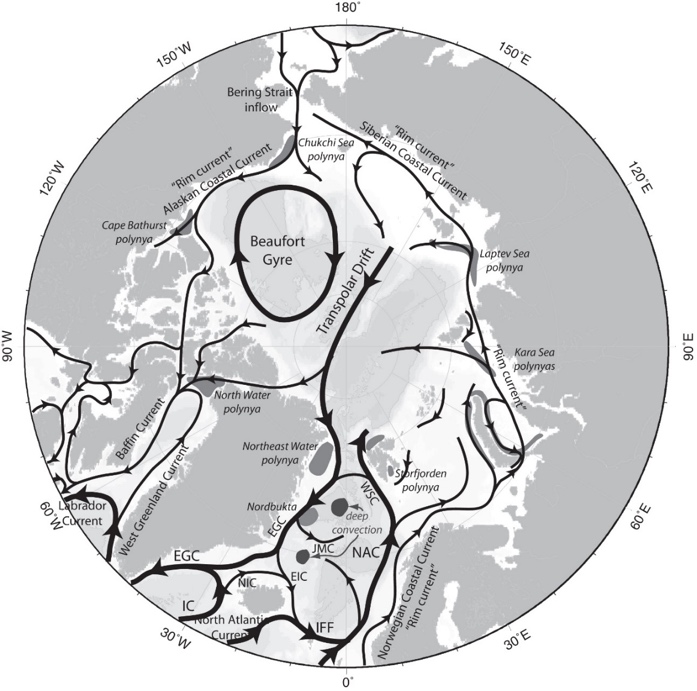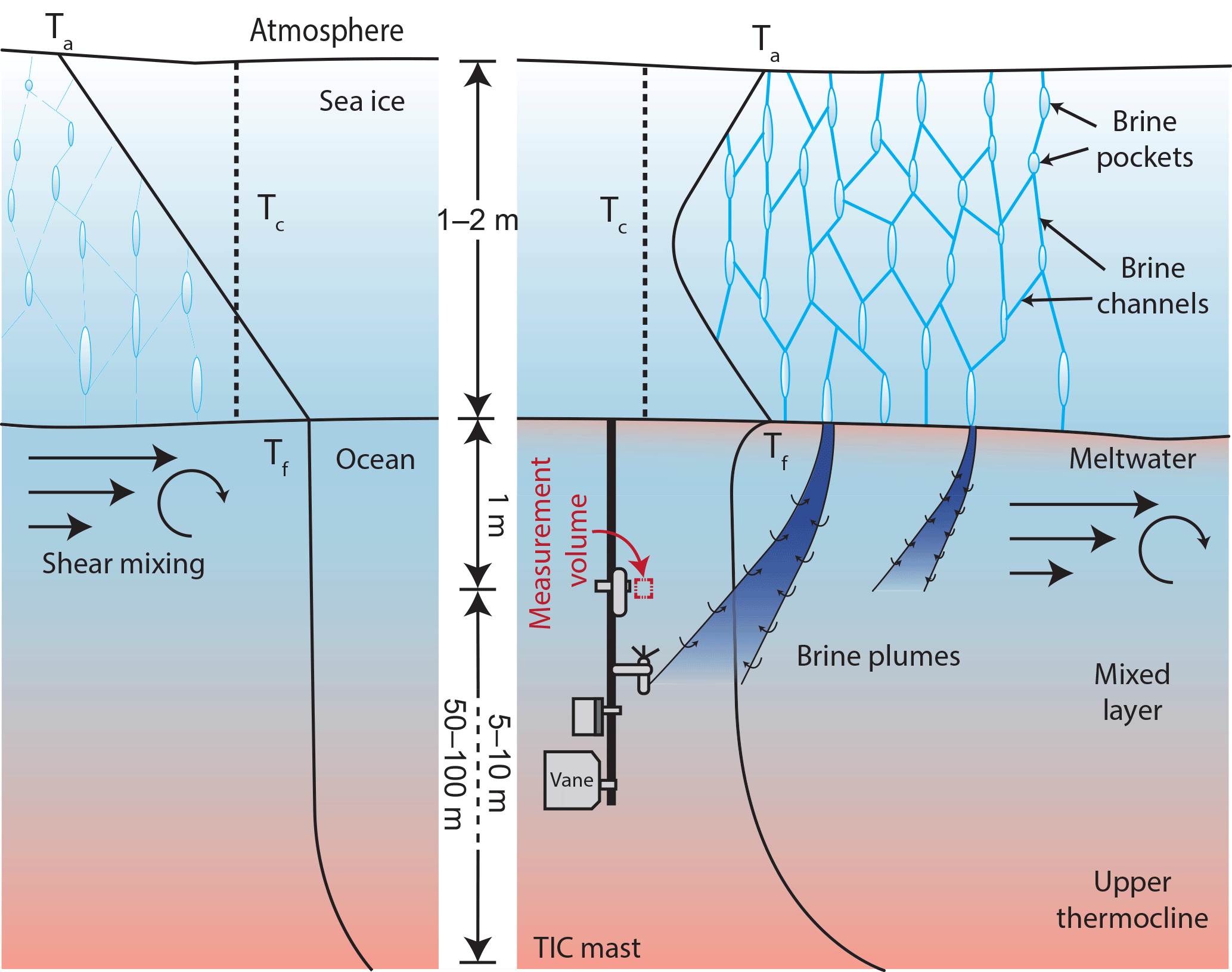The Arctic#
At the start of the first lecture, we will consider why we might want to study the climate and the oceans of the polar regions. We will be leaning heavily on the Special Report on the Oceans and Cryosphere in a Changing Climate (SROCC) from the Intergovernmental Panel on Climate Change throughout these lectures – there is a link and a QR code in the lecture PDF. I thoroughly recommend that you take a look at the Executive Summary at the very least, but also focus on Chapter 3: The Polar Regions.
The first lecture will focus on the Arctic, and we will explore some of the techniques and methods we use for measuring the physical properties of seawater and sea ice. All the way through these two lectures, keep in your mind the following questions: What can we measure? How can we measure it? What are the limitations? What are the observations?
The Arctic is a large ocean surrounding by land. It’s, on average, a relatively shallow sea as there are large areas of continental shelf. There are deeper parts of the Central Arctic Ocean, which are crossed by mid-ocean spreading ridges. This bathymetry, together with the prevailing weather patterns, largely set the ocean circulation patterns in the Arctic, which are dominated by the large Beaufort Gyre and the Transpolar Drift. These currents are very important in controlling the weather teleconnections between the Arctic and mid-latitudes (which mean that the Arctic has a big control on our weather patterns in the UK), and the supply of freshwater from the Arctic into the North Atlantic (which is very important for the global ocean circulation system).

The major ocean currents in the Arctic Ocean. From Lynne Talley’s Descriptive Physical Oceanography.#
The SROCC documents a number of important recent changes in the Arctic that we will discuss: the decrease in sea ice extent and thickness; the mass loss from land ice, reductions in snow cover, collapse of permafrost; ocean warming; ocean acidification and loss of oxygen; change in marine productivity and ecosystem function; and impacts on Indigenous People and communities. There is also an increasing trend of “Borealisation”, which is the increase in supply of relatively warm waters from the Atlantic and the Pacific into the Arctic Ocean. This impacts the warming and nutrient balance within the Arctic, with knock on effects for sea ice and marine ecosystems.
We will, in particular, explore the SROCC statement: “Over large sectors of the seasonally ice-free Arctic, summer upper mixed layer temperatures increased at around 0.5°C per decade during 1982–2017, primarily associated with increased absorbed solar radiation accompanying sea ice loss, and the inflow of ocean heat from lower latitude increased since the 2000s (high confidence)”.
Where did the measurements come from that led to this conclusion? We will talk through the shipboard and autonomous platform methods that we can use to make these observations in seawater and sea ice. We will focus on the movement (flux) of heat through different mixing processes in seawater, in the open ocean and underneath sea ice.

A schematic of under ice Turbulence Instrument Clusters (TICs), to investigate oceanic heat fluxes. From Peterson (2018).#
What are the limitations of these measurements? What aspects of the system will not be captured using a ship or autonomous platforms, and how can we get around these gaps (if we can at all!)?
